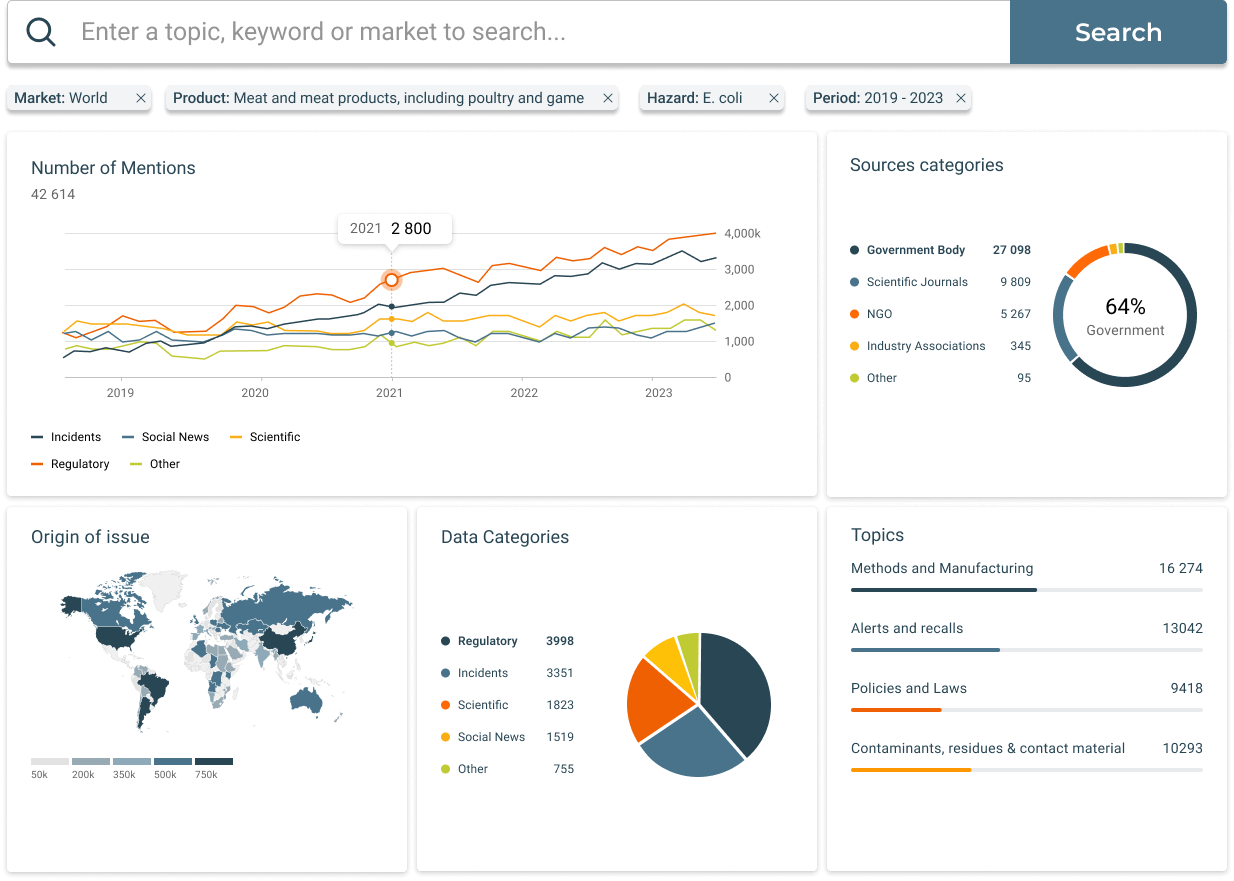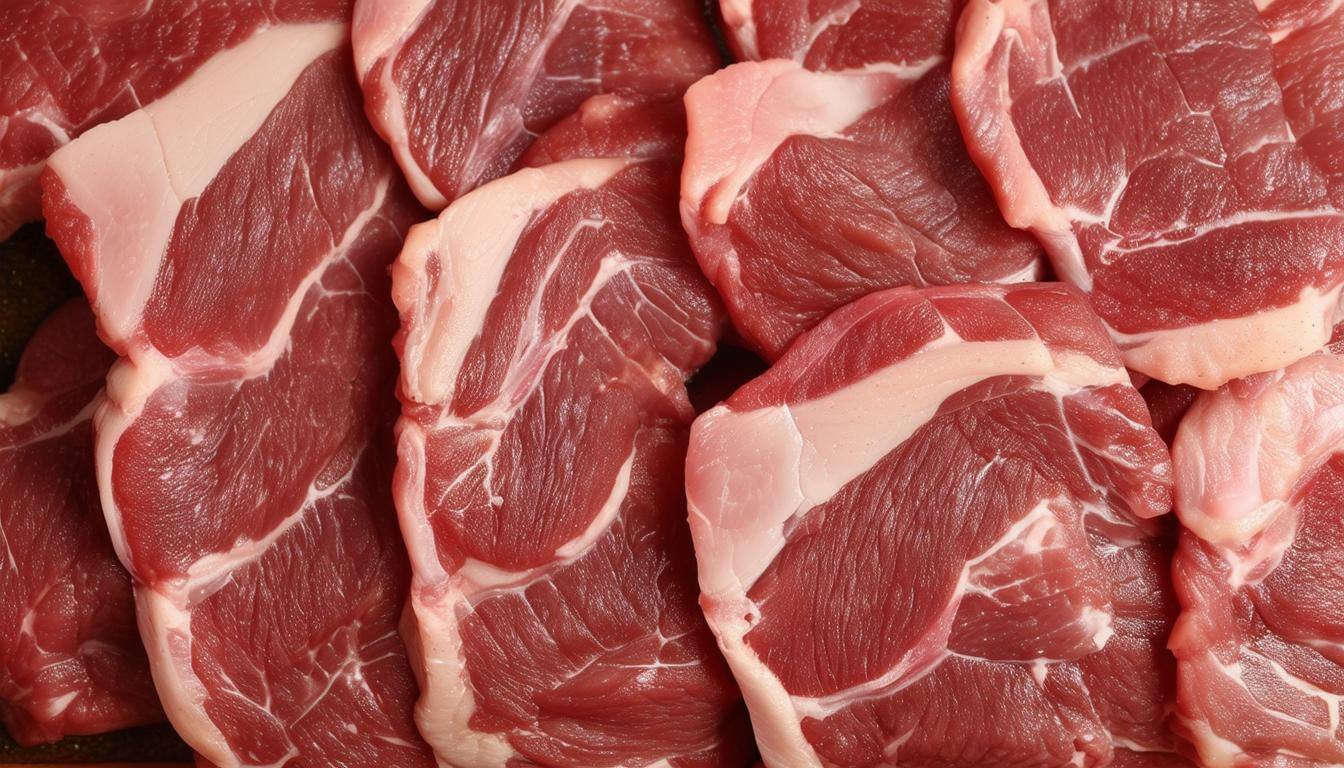Pork is one of the most widely consumed meats globally, but its production and handling present specific food safety challenges that can lead to recalls. Pork recalls are typically initiated due to contamination with harmful pathogens like Salmonella or Listeria, foreign material contamination, mislabeling of allergens, or improper handling practices. This guide provides an in-depth look at the causes of pork recalls, regulatory oversight, the impact on the meat industry, and preventive measures to ensure the safety of pork products. Let's dive into this type of Food Recall.
What is a Pork Recall?
A pork recall is the process of removing potentially unsafe or contaminated pork products from distribution and sale. Recalls can be initiated voluntarily by producers or required by regulatory agencies like the USDA’s Food Safety and Inspection Service (FSIS) if health risks are detected. Pork recalls may affect a variety of products, including raw cuts, ground pork, sausages, and ready-to-eat items like cured or smoked pork. Given the potential health risks associated with contaminated pork, recalls are handled swiftly to protect consumers and prevent foodborne illness outbreaks.
Main Causes and Hazards of Pork Recalls
Pork recalls are usually triggered by specific hazards that pose serious health risks to consumers. Common causes include:
-
Bacterial Contamination (e.g., Salmonella, Listeria, E. coli): Bacterial contamination is the leading cause of pork recalls. Salmonella, Listeria monocytogenes, and E. coli can enter the pork supply chain during slaughter, processing, or packaging if sanitation protocols are not strictly followed. These bacteria can cause severe foodborne illnesses, with symptoms ranging from nausea to life-threatening complications.
-
Foreign Material Contamination (e.g., Plastic, Metal, Bone Fragments): Pork recalls can be prompted by the presence of foreign materials, such as plastic, metal, or bone fragments. These contaminants may result from equipment malfunctions, processing errors, or packaging issues and pose physical hazards, including choking or injury.
-
Improper Temperature Control and Spoilage: Temperature control is critical in pork production to prevent spoilage and bacterial growth. If pork products are not stored or handled correctly, they can spoil or become unsafe to consume, leading to recalls.
-
Allergen Mislabeling: Processed pork products, such as sausages, may contain allergens like soy, dairy, or wheat. If these allergens are not accurately declared on the label, they pose serious risks to consumers with allergies, necessitating a recall.
These hazards emphasize the importance of strict quality control measures throughout pork production, handling, and packaging to prevent contamination and ensure consumer safety.
Regulatory Authorities' Role in Pork Recalls
In the United States, the USDA FSIS oversees pork recalls, with the CDC often assisting in tracking outbreaks linked to pork-related illnesses. Key roles of regulatory authorities in pork recalls include:
-
Inspection and Testing: FSIS conducts regular inspections of pork processing facilities to ensure that hygiene, temperature control, and quality control protocols are followed to prevent contamination.
-
Recall Classification and Management: When a recall is necessary, FSIS classifies it based on the level of risk:
- Class I Recall: High risk, involving products that could cause serious health issues or death, such as pork contaminated with Listeria or Salmonella.
- Class II Recall: Moderate risk, where the product may cause temporary health issues but is unlikely to result in severe illness.
- Class III Recall: Low risk, involving products that violate regulatory standards but do not pose immediate health threats.
-
Public Communication and Alerts: When a Class I or Class II recall occurs, FSIS issues public alerts, providing information on affected products, lot numbers, and health risks. These alerts are disseminated via press releases and online resources to inform consumers and retailers.
-
Corrective Actions and Follow-Up: After a recall, FSIS may require companies to implement corrective actions, such as enhancing sanitation protocols, upgrading equipment, or increasing employee training. These actions help prevent future contamination issues and improve food safety practices.
The involvement of regulatory authorities ensures that pork recalls are managed effectively and transparently, protecting public health and maintaining confidence in the food supply.
Impact of Pork Recalls on the Industry
Pork recalls can have significant repercussions for producers, distributors, and retailers, affecting various aspects of business:
-
Financial Losses: Recalls lead to direct costs associated with retrieving products, conducting tests, and implementing corrective actions. Additional financial impacts may arise from lost sales, reduced demand, and potential legal liabilities if consumers are affected.
-
Reputation Damage: A pork recall, especially one involving bacterial contamination, can harm a brand's reputation. Rebuilding consumer trust often requires transparency, a commitment to safety improvements, and public relations efforts.
-
Increased Regulatory Scrutiny: Following a recall, companies often face heightened regulatory oversight, including more frequent inspections and stricter compliance requirements. This increased scrutiny can strain resources and impact business operations.
-
Supply Chain Disruption: Pork recalls affect the entire supply chain, from slaughterhouses to retailers. Effective coordination with suppliers and distributors is essential to remove affected products and restore normal operations efficiently.
Understanding these impacts underscores the importance of implementing preventive measures to maintain safety standards and protect both consumer health and brand reputation.
Preventive Measures for Pork Recalls
To reduce the likelihood of pork recalls, producers and processors should adopt proactive food safety practices. Key preventive measures include:
-
Hazard Analysis and Critical Control Points (HACCP) Implementation: A robust HACCP plan identifies critical control points in pork processing, allowing for the implementation of safety measures to prevent contamination.
-
Sanitation and Hygiene Protocols: Strict sanitation practices in processing facilities are essential to prevent bacterial growth and cross-contamination. Regular cleaning of equipment, tools, and surfaces reduces the risk of contamination.
-
Temperature Control and Cold Chain Management: Proper temperature management during storage, processing, and transport prevents bacterial growth. Maintaining a reliable cold chain is crucial for ensuring the safety and quality of pork products.
-
Supplier Verification and Raw Material Testing: Working with trusted suppliers and conducting regular testing of raw pork materials ensures quality and minimizes contamination risks at the source.
-
Routine Microbial Testing: Conducting regular microbial tests on pork products throughout the production process allows for early detection of contaminants. This testing, coupled with thorough batch tracking, facilitates swift action in the event of contamination.
-
Employee Training on Food Safety: Properly trained employees who understand food safety protocols, including personal hygiene and safe handling practices, help reduce contamination risks. Education is essential for maintaining consistent food safety standards.
-
Accurate Labeling and Allergen Management: Ensuring that labels accurately declare all ingredients and allergens is critical for protecting consumers with food allergies. Proper labeling and allergen control reduce the risk of mislabeling-related recalls.
By incorporating these preventive measures, pork producers can minimize recall risks, protect consumer health, and maintain regulatory compliance.
Conclusion
Pork recalls play an essential role in protecting public health, addressing risks associated with bacterial contamination, foreign materials, and mislabeling. Understanding the causes of pork recalls—from microbial hazards to quality control failures—enables industry professionals to take preventive measures and meet USDA FSIS standards for safety and quality.
For pork producers, proactive safety practices are essential. Implementing HACCP protocols, adhering to rigorous sanitation standards, and conducting regular microbial testing are all critical for minimizing recall risks. Transparent communication with regulatory authorities and the public further strengthens consumer confidence and supports a robust, reliable food supply.
Through these efforts, the pork industry can deliver safe, high-quality products that consumers trust, contributing to a safer and healthier food system.
Last Month's Food Recalls and Safety Incidents
Explore the latest food recalls, market withdrawals, and safety alerts in our free Food Safety Incidents Dashboard. Updated monthly and powered by SGS Digicomply, this dashboard provides a clear, filterable list of last month’s global food recalls and incidents, allowing you to stay informed on the products and hazards affecting the industry.

How manufacturers and companies can track and utilize global recall data:
SGS Digicomply continuously monitors and analyzes millions of data sources across over 160 jurisdictions. With easy-to-use filters for sources, locations, products, substances, hazards, and more, our platform allows manufacturers to track recall trends and gain actionable insights powered by AI-Copilot.
Explore our interactive demos to see these tools in action.

By combining diverse data sources, SGS Digicomply offers the most comprehensive and targeted screening of food safety data, contextualized with real-time lab data to identify emerging risks.





.webp?width=1644&height=1254&name=Food%20Safety%20Dashboard%201%20(1).webp)
